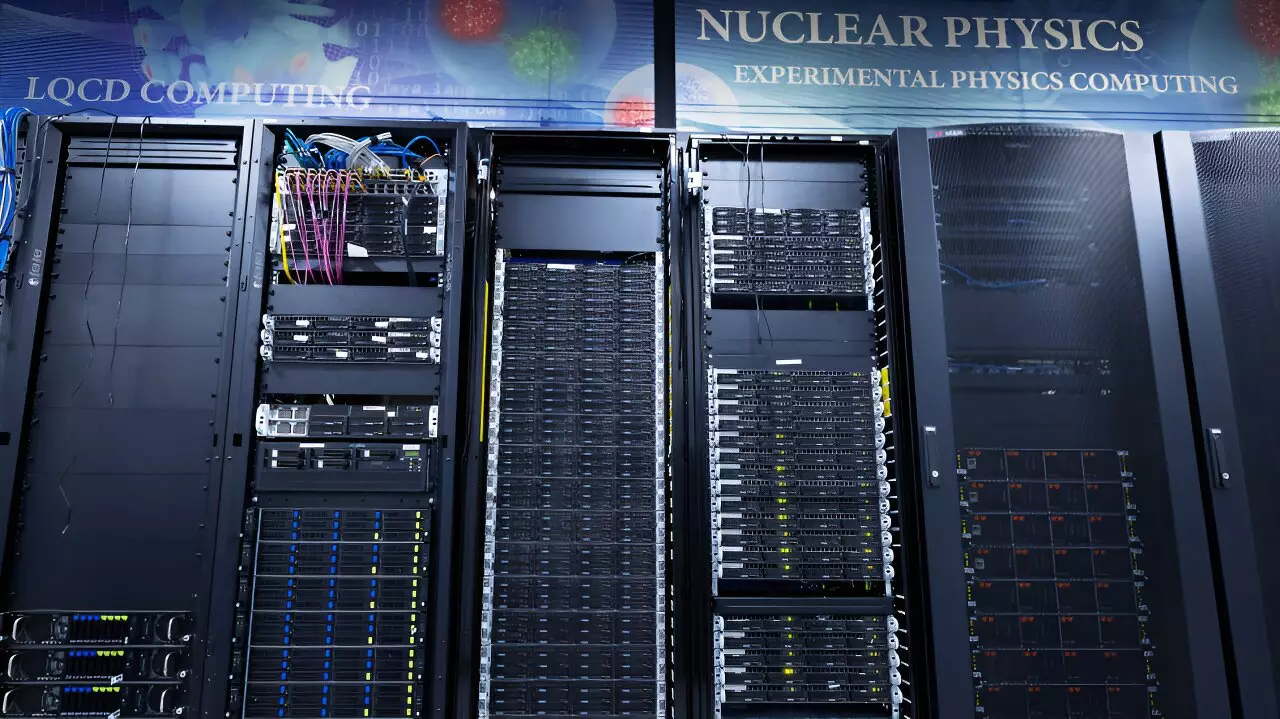At the heart of atomic structure lies a realm that defies our conventional understanding of solidity. The components that make up atomic nuclei—the protons and neutrons, also known as hadrons—are complex entities themselves, composed of fundamental particles called quarks and gluons. Together, these quarks and gluons form a dynamic, ever-changing environment characterized by interactions that contribute to the myriad properties of matter. The recently formed HadStruc Collaboration, based at the Thomas Jefferson National Accelerator Facility, aims to map and clarify the interactions of these partons, paving the way for groundbreaking insights into the fundamental forces that govern our universe.
The HadStruc Collaboration: A Collective Effort
The HadStruc Collaboration represents a coalition of talents from various academic institutions, entangled in the quest for a deeper understanding of hadronic structure. Spearheaded by researchers from Jefferson Lab and universities such as William & Mary and Old Dominion University, the collaboration harnesses a rich blend of expertise to confront some of the fundamental questions in nuclear physics. Karpie, a key member of the team, emphasizes the collaborative aspect of this endeavor, which combines both theoretical and computational physics to tackle complex problems surrounding quark and gluon distributions.
Each member brings a unique perspective and specialization to the project, allowing for a comprehensive approach to exploring the nature of hadrons. Their recent publication in the prestigious Journal of High Energy Physics showcases the collective intellect that drives the pursuit of knowledge in this intricate field.
The Role of Quantum Chromodynamics (QCD)
Quantum Chromodynamics (QCD), the theory governing the interactions of quarks and gluons, serves as the foundational framework for the HadStruc Collaboration’s research. An intriguing aspect of this field lies in how researchers are systematically peeling back the layers of complexity associated with hadronic structure. Through a mathematical lens, they are investigating the distribution of partons within protons. By employing a pioneering approach known as lattice QCD, the team is utilizing supercomputing resources to conduct complex simulations that provide fresh insights into this subject matter.
This innovative strategy transcends the limitations of traditional one-dimensional parton distribution functions (PDFs) by adopting a three-dimensional perspective through the concept of generalized parton distributions (GPDs). Dutrieux, another member of the collaboration, notes that this shift is essential for unraveling critical questions, particularly regarding the enigmatic nature of proton spin.
Probing the Enigma of Proton Spin
The spin of the proton is one of the longstanding mysteries in particle physics, especially considering experimental evidence from as early as 1987 indicating that quarks contribute less than half of the overall spin. The lingering question is: where does the rest of the spin originate? The HadStruc Collaboration is utilizing GPDs as a theoretical tool to explore this intriguing question. By examining the roles of gluons and the orbital angular momentum of quarks, they are hoping to provide a coherent explanation of spin distribution within hadrons.
Dutrieux brings further clarity to the implications of their research, noting that understanding not only the distributions of matter but also the energy-momentum tensor will enable researchers to comprehend how protons interact with fundamental forces, including gravity. This multidimensional approach is set to illuminate aspects of hadron dynamics that have remained opaque to physicists for decades.
Undertaking such complex calculations is no small feat. The HadStruc Collaboration has risen to the challenge with impressive computational prowess, conducting 65,000 simulations to validate their theoretical models. Utilizing high-performance supercomputers like Frontera and the Frontier supercomputer at Oak Ridge National Laboratory, the researchers have processed vast amounts of data over millions of computational hours. The scale and depth of these simulations represent a crucial milestone in their ongoing efforts to refine and improve their three-dimensional approach.
Karpie highlights the promising outcomes of these tests, describing their results as a “proof of principle.” However, the journey ahead necessitates even more ambitious computational endeavors. Fine-tuning their approximations will require a staggering computational investment, but the potential payoff could dramatically enhance the field of nuclear physics.
Looking ahead, the HadStruc Collaboration is poised to extend its findings into experimental settings, leveraging their theoretical work to inform real-world applications. Ongoing experiments at facilities like the Jefferson Lab and the upcoming Electron-Ion Collider (EIC) will provide fertile ground for testing the predictions made by their sophisticated models. By collaborating with experimental physicists, they aspire to construct a bridge between theory and practice that will elevate understanding of hadronic structure to new heights.
The efforts of the HadStruc Collaboration signify a crucial leap toward demystifying the intricate world of hadrons, offering valuable insights into the very fabric of matter. Their meticulous study of parton interactions represents a vital contribution to the broader field of nuclear physics, and the ongoing quest for understanding the fundamental components of the universe promises to yield discoveries that will resonate through science for years to come.


Leave a Reply